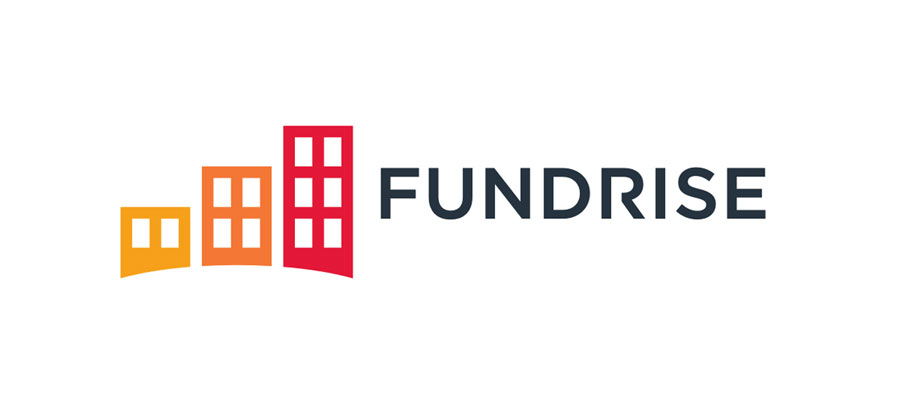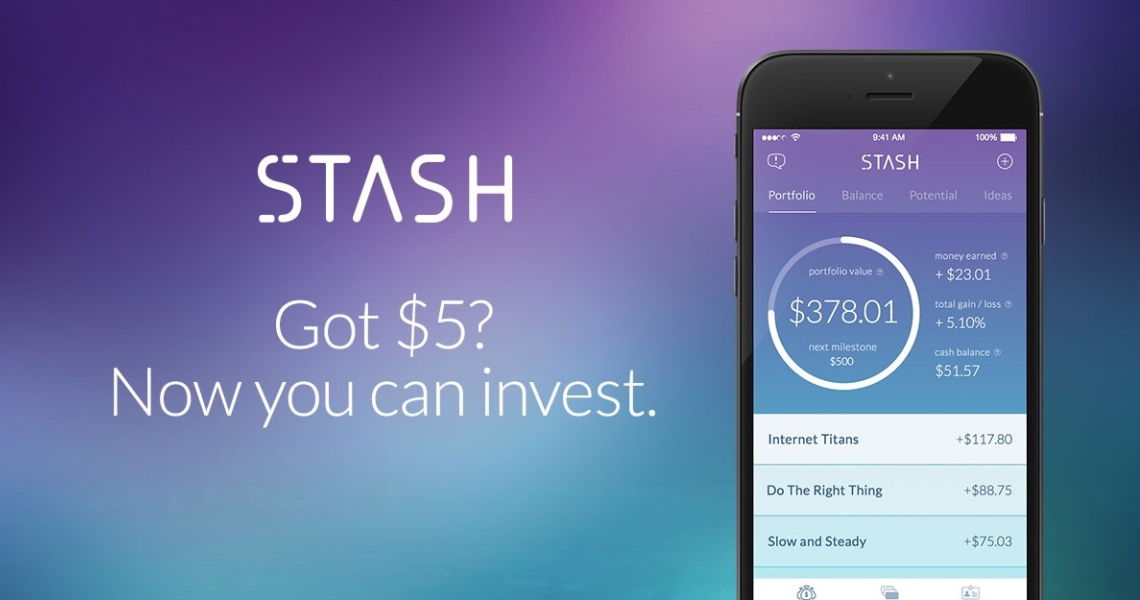Looking to invest in real estate without buying a property or dealing with tenants? Fundrise is a real estate investing platform that makes it easy to earn passive real estate income—starting with just $10.
Real estate has long been one of the most reliable ways to build wealth, but traditional investing often requires deep pockets, time, and experience. Fundrise changes that. It offers professionally managed portfolios of private real estate and alternative assets, giving everyday investors access to opportunities once reserved for institutions.

Whether you’re aiming for long-term growth, steady income, or portfolio diversification beyond stocks and bonds, Fundrise gives you a low-cost way to get started.
In this review, we’ll break down how Fundrise works, the types of portfolios it offers, and whether it’s the right fit for your investment goals.
What is Fundrise?
Fundrise is an online real estate investing platform that lets everyday people invest in private real estate, private credit, and even venture capital—with as little as $10.
Launched in 2010, Fundrise helped break down the traditional barriers to alternative investing. In the past, opportunities like commercial real estate and multifamily housing were mostly limited to accredited investors with high incomes or net worth. Fundrise changed that by offering access through a simple, direct-to-consumer model.
Instead of going through brokers or fund managers, you invest directly into professionally managed portfolios. That means fewer middlemen, lower fees, and more transparency. And because Fundrise spreads your money across multiple properties and projects, it’s a way to diversify beyond just stocks and bonds.
How Fundrise Builds Wealth Through Real Estate and Private Credit
Fundrise makes real estate investing simple by offering professionally managed portfolios designed around specific financial goals. With low minimums and a fully online platform, it gives everyday investors access to private assets without the usual barriers.
Getting Started With Fundrise
To open an account, you’ll answer a short questionnaire about your goals and risk tolerance. Based on your responses, Fundrise recommends one of four prebuilt investment strategies—each tailored to different objectives like income, growth, or diversification.
Fundrise Portfolio Options
Here’s a quick breakdown of the four available plans:
- Supplemental Income Plan – Designed for steady cash flow with low volatility. This plan invests mostly in private credit (80%) and income-producing real estate (20%). Ideal for retirees or anyone focused on predictable income.
- Balanced Investing Plan – Offers a mix of short-term income and long-term growth. It leans into growth-oriented real estate (90%) while keeping a smaller slice in private credit (10%).
- Long-Term Growth Plan – Focuses entirely on real estate assets with high potential for appreciation. This is for investors with a long time horizon who don’t need immediate cash flow.
- Venture Capital Plan – Invests in early-stage private tech companies through the Innovation Fund. This plan is high-risk, high-reward—and best suited for investors with a strong stomach and a long-term mindset.
Where Your Money Goes
Once you choose a plan, your funds are pooled with other investors to buy or develop real estate and private credit assets. These might include apartment complexes, commercial buildings, residential developments, or value-add projects.
Fundrise handles everything—acquisition, management, and reporting—so you get a completely hands-off experience.
How You Make Money
You can earn returns in two ways:
- Quarterly Dividends – Dividends from rental income or loan payments are typically distributed quarterly, and investors can reinvest them to maximize growth.
- Asset Appreciation – As property values or business valuations increase.
You can reinvest dividends or withdraw them, and everything is tracked in a clean, easy-to-use dashboard.
Fundrise Performance: Historical Returns and Real Results
Fundrise publishes quarterly performance updates across its funds, and while past returns don’t guarantee future performance, the platform has shown solid results over time—even during periods of market volatility.
Average Annual Returns by Year
Here’s a look at Fundrise’s average annualized returns across all client accounts:
- 2020: 7.42%
- 2021: 22.99%
- 2022: 1.50% (amid rising interest rates and market uncertainty)
- 2023: 6.5%
- Q1 2024: 4.6% (quarterly return, not annualized)
Performance varies by plan and portfolio allocation. Growth-focused plans may see more volatility, while income-focused plans tend to offer more stable returns.
Example: Balanced Plan Since 2018
An investor who joined the Balanced Investing Plan in 2018 and reinvested dividends would have earned an average annualized return of approximately 8%–9%, depending on market timing and allocation.
This includes dividends from rental income as well as appreciation from underlying real estate assets. Fundrise also shares specific project-level results inside each investor’s dashboard for added transparency.
Fundrise Account Types: Options for Individuals, Businesses, and Retirement Investors
Fundrise supports a wide range of account types to fit different investor profiles and financial strategies. Whether you’re investing solo, with a partner, through a business, or as part of a long-term retirement plan, the platform offers flexible options to match your goals.
Available Account Types
- Individual Accounts – Best for solo investors looking to grow wealth through real estate and alternative assets.
- Joint Accounts – Ideal for spouses or partners who want to co-own and manage investments together.
- Retirement Accounts (IRAs) – Fundrise supports Traditional, Roth, and Rollover IRAs, allowing you to invest with tax advantages.
- Entity Accounts – Lets LLCs, corporations, or partnerships invest in Fundrise portfolios as part of a business strategy.
- Trust Accounts – Allows investments to be held in trust, making it easier to manage assets for estate planning or generational wealth.
- Advisor-Assisted Accounts – Designed for financial advisors who want to manage Fundrise investments on behalf of their clients.
These account options make Fundrise accessible to a wide range of users—from individuals planning for retirement to small businesses and estate planners looking to diversify into private real estate and credit.
Who Should (and Shouldn’t) Invest in Fundrise
Fundrise isn’t a one-size-fits-all platform. It works well for some investors—but not for everyone. Here’s who it’s best for, and who might want to look elsewhere.
Fundrise Is a Good Fit For:
- Long-Term Investors: Real estate projects take time to pay off. Fundrise recommends holding your investment for at least five years.
- Moderate Risk Takers: Returns can fluctuate with the market. If you’re comfortable with some risk in exchange for higher potential rewards, Fundrise fits the bill.
- Diversification Seekers: If your portfolio is heavy in stocks and bonds, Fundrise adds exposure to private real estate and credit—assets that don’t always move with the market.
- Budget-Conscious Investors: You can get started with just $10, making it accessible to investors without large amounts of capital.
Fundrise May Not Be Right If:
- You Need Fast Access to Cash: These are illiquid investments. Early withdrawals can be delayed or restricted, especially in volatile markets.
- You Prefer Traditional Investing: Fundrise is 100% online. If you’re uncomfortable with digital platforms or want a personal advisor, it might not be the right fit.
- Liquidity Is a Top Priority: Unlike stocks or publicly traded REITs, you can’t sell your position instantly. Consider more liquid options like ETFs if flexibility matters most.
Pros & Cons of Fundrise
Fundrise makes real estate investing more accessible, but it’s not the right fit for everyone. Here’s a quick breakdown of the biggest advantages—and the trade-offs to watch for.
Pros
- Low Barrier to Entry
You can start investing with just $10. That’s a huge shift from traditional real estate, which often requires tens of thousands in upfront capital. - Strong Historical Returns
Fundrise has delivered average annual returns between 8.7% and 12.4% in past years. While not guaranteed, these returns highlight the potential for real growth over time. - Built-In Diversification
Your money is spread across multiple real estate projects—residential, commercial, and development—helping reduce risk compared to owning a single property. - 90-Day Money-Back Guarantee
Not sure if it’s for you? Fundrise offers a full refund within your first 90 days if you change your mind.
Cons
- Limited Liquidity
Fundrise isn’t ideal if you need quick access to cash. Most plans recommend a five-year commitment, and early withdrawals can be delayed or restricted. - Opaque Fees
The headline annual fee is 1%, but other costs—like development or servicing fees—may be baked into each project and aren’t always obvious upfront. - Market Risk
As with any investment tied to real estate, your returns may fluctuate with the economy. Property values and rental income can dip during downturns. - No Major Recession Test (Yet)
Fundrise launched after the 2008 crash, so it hasn’t been battle-tested in a full-blown real estate crisis. That makes future performance less predictable in tough markets.
Fundrise vs. Competitors: How It Compares
Fundrise isn’t the only platform offering access to alternative investments, but it stands out for its accessibility and simplicity. Here’s how it compares to two other major players in the space—RealtyMogul and CrowdStreet.
Fundrise
- Minimum Investment: $10
- Best For: Beginners and investors looking for diversified real estate exposure with a low barrier to entry
- Notable Feature: Offers a Starter Portfolio and a 90-day money-back guarantee
Fundrise is one of the easiest ways to start investing in real estate with very little capital. Visit Fundrise to learn more.
EquityMultiple
- Minimum Investment: $5,000
- Best For: Investors looking for a mix of commercial real estate equity and debt options
- Notable Feature: Offers short-term notes, preferred equity, and syndication deals
Learn more about EquityMultiple’s commercial real estate focus.
Yieldstreet
- Minimum Investment: $10,000
- Best For: Investors seeking passive income from alternative assets, including real estate debt
- Notable Feature: Includes art, legal finance, and private credit in addition to real estate
Explore Yieldstreet if you’re focused on income from alternative investments.
RealtyMogul
- Minimum Investment: $5,000
- Best For: Investors who want to choose individual properties or access institutional-grade deals
- Notable Feature: Combines publicly registered REITs with private placement offerings
If you’re looking for more control over individual real estate investments, RealtyMogul might be worth exploring.
CrowdStreet
- Minimum Investment: $25,000
- Best For: High-net-worth individuals seeking direct access to large commercial real estate deals
- Notable Feature: Offers direct investments in professionally vetted commercial projects
For accredited investors interested in premium, project-level deals, CrowdStreet could be a strong fit.
Tax Considerations When Investing With Fundrise
Like most investments, earnings from Fundrise are taxable. Dividends are generally taxed as ordinary income, which means they’re subject to your regular income tax rate.
However, because many Fundrise investments are structured as REITs, you may qualify for the 20% pass-through deduction under the Tax Cuts and Jobs Act—potentially reducing your taxable income.
Fundrise provides an annual Form 1099-DIV to simplify reporting during tax season. If you invest through an IRA, different tax rules apply, and you may benefit from tax deferral or tax-free growth, depending on the account type.
Tip: A tax advisor can help you understand how Fundrise fits into your overall strategy and which account type is best for your goals.
Is Fundrise safe?
Yes, Fundrise is a legitimate investment platform with a strong reputation and a track record of consistent performance. It holds an A+ rating from the Better Business Bureau and serves hundreds of thousands of investors across the U.S.
That said, all investments carry risk—especially in real estate, which can be affected by interest rates, market cycles, and economic downturns. Fundrise portfolios are diversified to help manage that risk, but returns aren’t guaranteed.
As with any investment, it’s important to understand the potential downsides before putting your money to work.
Conclusion
Fundrise offers a simple, low-cost way to get into private real estate without needing to buy or manage properties yourself. With its $10 minimum, diversified portfolios, and long-term focus, it’s a solid option for everyday investors who want to move beyond stocks and bonds.
But it’s not for everyone. If you need quick access to your money or prefer highly liquid investments, Fundrise may not be the best fit.
Before you invest, review the platform’s terms, consider your time horizon and risk tolerance, and explore real user reviews. When used strategically, Fundrise can be a valuable tool for building long-term wealth through alternative assets.
Frequently Asked Questions
Can I automate my investments with Fundrise?
Yes. Fundrise offers an auto-invest feature that automatically reinvests your dividends or adds new contributions based on your selected plan. This helps you stay consistent with your strategy without having to log in each time you want to invest.
Does Fundrise offer a mobile app?
Yes. Fundrise has a mobile app available for both iOS and Android devices. You can use it to monitor your portfolio, track performance, reinvest dividends, and receive updates on individual projects.
Can I change my investment plan after signing up?
Yes. Fundrise allows you to adjust your investment strategy over time. You can switch between available plans—like income-focused or growth-focused—based on your evolving financial goals. Just note that changes may take a few days to process.
How are Fundrise’s private credit investments different from traditional real estate?
Private credit involves lending money to real estate developers or businesses, often backed by real assets. These investments typically provide steady income through interest payments and are less dependent on property appreciation compared to equity real estate deals.
What kind of updates does Fundrise provide on my investments?
Fundrise gives you regular updates through your dashboard, including performance reports, news about specific projects, and quarterly summaries. You’ll see breakdowns of dividends earned, asset appreciation, and any changes to your portfolio value.




